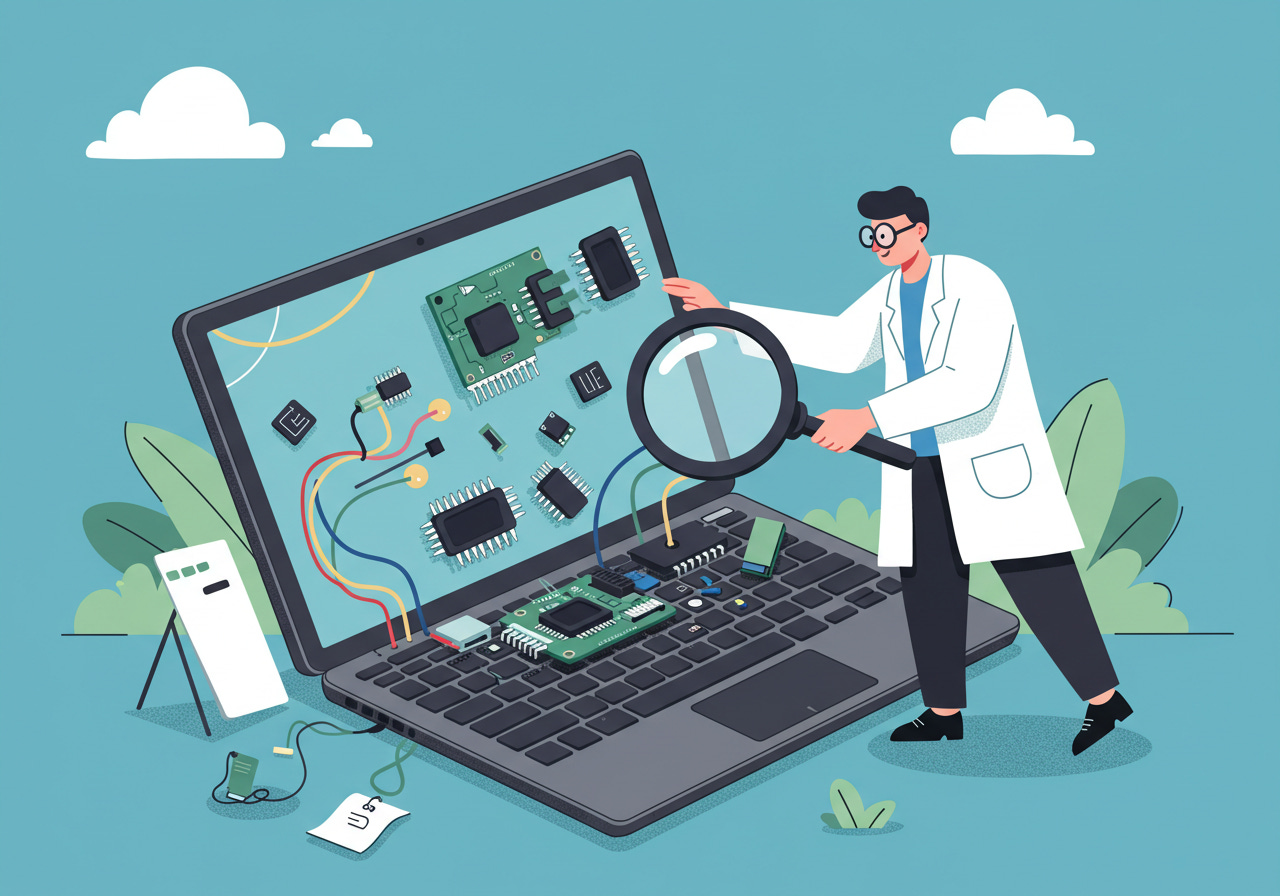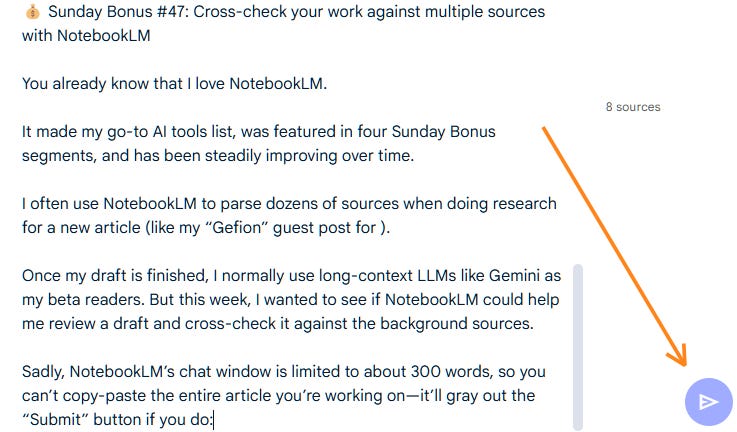Sunday Rundown #87: Deep Research & Mega Laptop
Sunday Bonus #47: Cross-checking drafts against sources with NotebookLM
Happy Sunday, friends!
Welcome back to the weekly look at generative AI that covers the following:
Sunday Rundown (free): this week’s AI news + a fun AI fail.
Sunday Bonus (paid): a goodie for my paid subscribers.
Let’s get to it.
🗞️ AI news
Here are this week’s AI developments.
👩💻 AI releases
New stuff you can try right now:
Adobe’s new Acrobat AI Assistant can help people with contract work by simplifying complex terms and spotting differences between agreements.
Google news:
The new Gemini 2.0 family is now available to everyone:
Gemini 2.0 Flash and Gemini 2.0 Flash Thinking Experimental are available via the Gemini chatbot.
Gemini 2.0 Flash Lite and Gemini 2.0 Pro Experimental are available via the Google AI Studio.
Imagen 3 is now available through the Gemini API, so developers can incorporate it into apps and products. The rest of us can still use Imagen 3 for free via ImageFX (Google Labs).
Hugging Face rolled out an open-source Deep Research agent that can autonomously browse the web and extract relevant information. (Sure, we didn’t have enough “Deep Research” products to keep track of.)
Mistral AI gave its AI assistant ”le Chat” a major facelift, making it ultra-fast and improving its real-time browsing, image generation, and coding abilities.
OpenAI news:
Deep Research is a competent search agent powered by o3 that can conduct multistep research for complex topics. ChatGPT Pro accounts only for now. (I covered it and some alternatives.)
o3-mini now shows more of its thinking in a futile attempt to sound as endearing as DeepSeek-R1.
Search inside ChatGPT is now available to everyone without sign-up.
Pika Labs launched a fun Pikadditions feature that lets you insert anyone or anything into an existing video. (Everyone gets 15 free Pikadditions to try.)
PlayAI has a new text-to-speech model called ”Dialog” that delivers emotive, humanlike speech and beats all competitors on human preference benchmarks.
🔬 AI research
Cool stuff you might get to try one day:
Bytedance showcased OmniHuman-1, an AI model that generates realistic videos from a single image and “motion signals” (e.g. audio).
Meta teased a VideoJAM framework that anchors AI video generation in realistic and coherent motion (a bit like what ControlNet does for images).
Singapore researchers introduced MatAnyone, a robust matting framework that can accurately extract subjects from videos while preserving fine details.
Topaz Labs unveiled Project Starlight, which turns old, low-quality videos into sharp, high-resolution ones. (Apply for early access on X.)
📖 AI resources
Helpful AI tools and stuff that teaches you about AI:
“AI Voice Agents: 2025 Update” [REPORT] - a look at the AI voice agent landscape and models by a16z.
“Constitutional Classifiers: Defending against universal jailbreaks” [RESEARCH PAPER] - a robust method to protect AI models by Anthropic.
“Deep Dive into LLMs like ChatGPT” [VIDEO] - an accessible, exhaustive intro to LLMs for the general audience by the awesome Andrej Karpathy.
“Responsible AI Progress Report” [PDF] - Google’s approach to responsible AI.
“Spaces: The AI App Directory” [DATABASE] - massive library of Hugging Face spaces with AI-powered search to help you find what you need.
🤦♂️ AI fail of the week
“Honey, I shrunk myself. No, I blew up the laptop. No, I…I don’t know anymore.”
💰 Sunday Bonus #47: Cross-check your work against multiple sources with NotebookLM
You already know that I love NotebookLM.
It made my go-to AI tools list, was featured in four Sunday Bonus segments, and has been steadily improving over time.
I often use NotebookLM to parse dozens of sources when doing research for a new article (like my “Gefion” guest post for
).Once my draft is finished, I normally use long-context LLMs like Gemini as my beta readers. But this week, I wanted to see if NotebookLM could help me review a draft and cross-check it against the background sources.
Sadly, NotebookLM’s chat window is limited to about 300 words, so you can’t copy-paste the entire article you’re working on—it’ll gray out the “Submit” button if you do:
But there’s a rather reliable workaround to this limitation.
Let me show you the workflow and my go-to prompt for analyzing and cross-checking a draft against your research sources.





